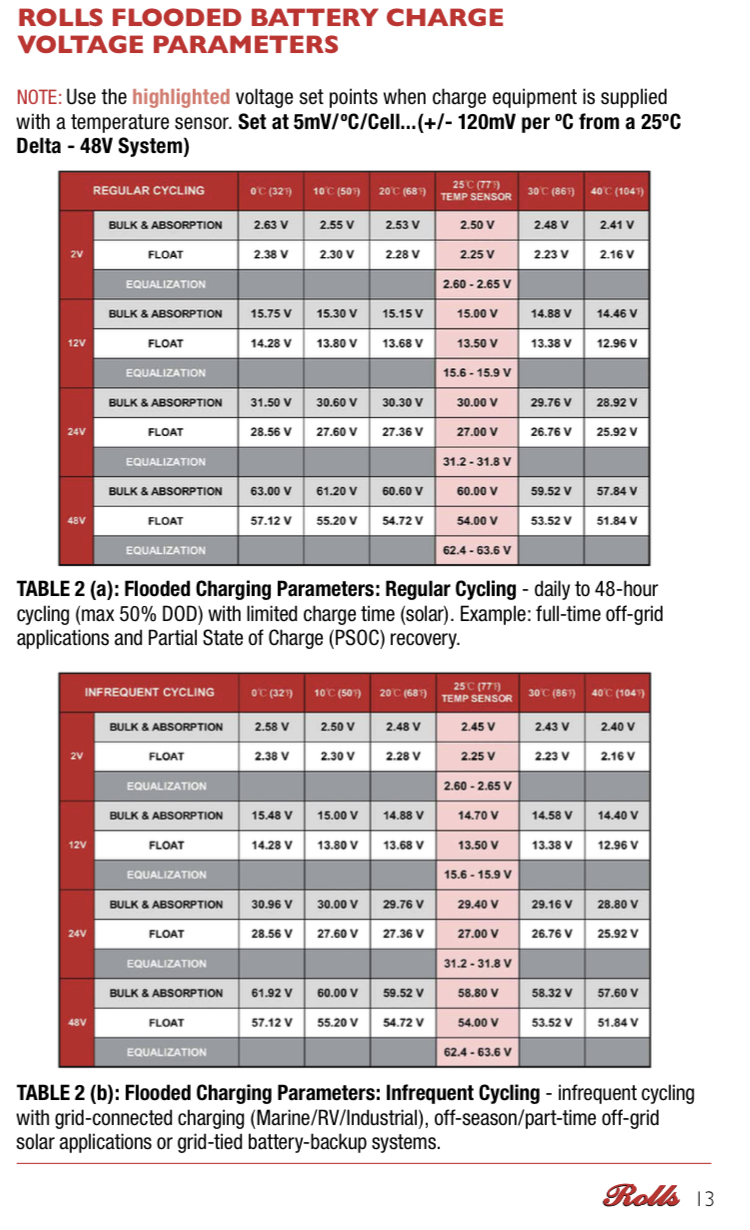I am hoping someone would be able to clarify the limitations on the maximum charge voltage of the RS 450.
I have a new batch of Rolls L16 Flooded lead batteries on a truck headed my way which is to be commissioned with a new 450/100. Upon looking at the manual produced by Rolls the charge voltage for my soon to be delivered batteries call for the following charge settings regular cycling:
 I read the latest product update which states “Furthermore on the RS products, we found an issue in the derating of the output current by voltage, and when looking further into that decided to reduce the maximum programmable charge voltage. The highest configurable charge voltage is now 62V, and that will be changed to 60V. For most systems this will not be a problem, since they need charging at 57.6V or similar voltages below 60V. But for some it might and we apologise for the confusion around this.
I read the latest product update which states “Furthermore on the RS products, we found an issue in the derating of the output current by voltage, and when looking further into that decided to reduce the maximum programmable charge voltage. The highest configurable charge voltage is now 62V, and that will be changed to 60V. For most systems this will not be a problem, since they need charging at 57.6V or similar voltages below 60V. But for some it might and we apologise for the confusion around this.
The changes are:
1) Output current now derates from full rated current at 57V to 5A at 63V. Which will change to full current up to 60V and then derate linearly down to 5 amps at 62V.
2) The maximum configurable charge voltage will be reduced from 62V to 60V. Due to the internals, the MPPT RS really is not suited to work with batteries operating at those higher voltages.
In the coming weeks we will update the documentation to reflect above changes, as well as release firmware version v1.09, which implements them.”
I am hoping for clarification and or guidance with the setup of my new 450/100 related to this voltage limitation and the requirements of the battery manufacturer being higher.
Really hoping I didn’t purchase an expensive charge controller that can not charge or equalize a set of Rolls batteries?
